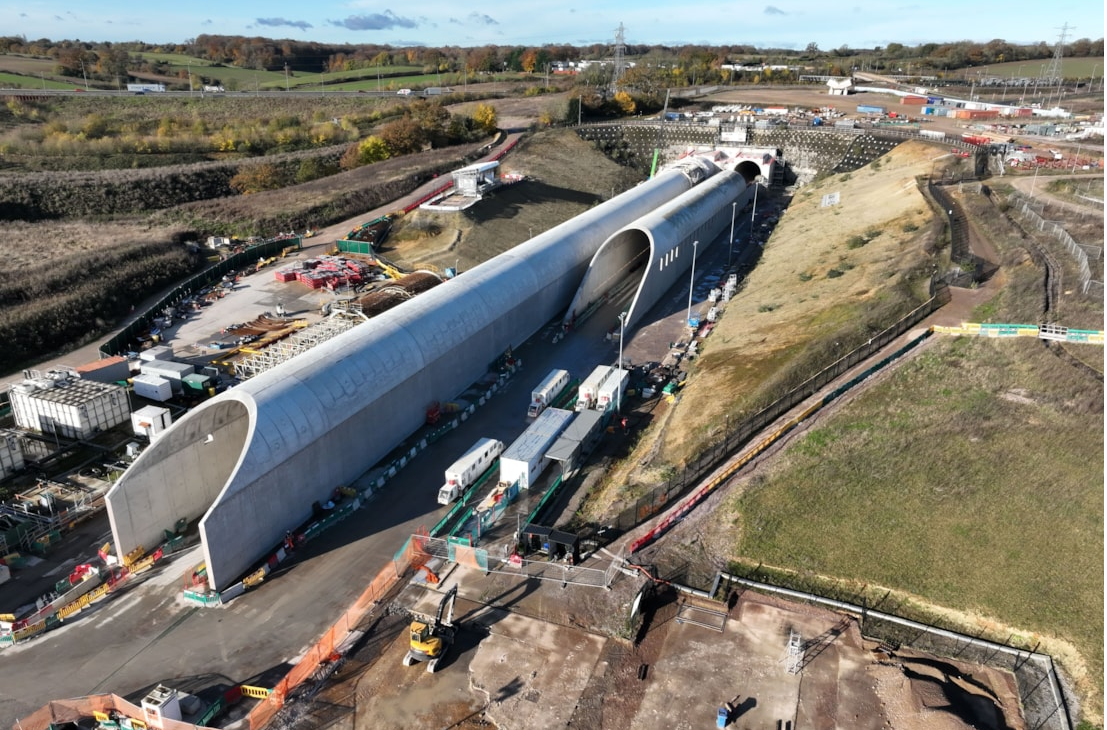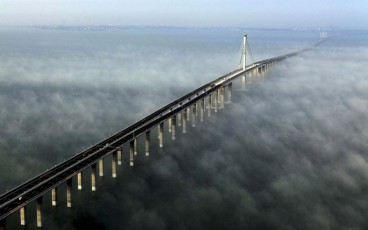Quiet Power: How HS2 Combats Sonic Booms with Precision Engineering


Sources: mediacentre.hs2.org.uk, volkerfitzpatrick.co.uk
Want to read more like this story?
Final design of HS2 Chiltern Tunnel’s North Portal revealed
Mar, 24, 2023 | NewsHigh Speed 2 (HS2) revealed the final designs of Chiltern Tunnel’s North Portal on Tuesday, March 2...

From Blueprint to Reality: HS2 Achieves Historic Tunneling Milestone
Mar, 13, 2025 | NewsThe HS2 project has reached a significant milestone with the completion of the first deep twin-bore...

HS2 Northolt Tunnel: Celebrating the Halfway Mark
Jul, 23, 2024 | NewsHS2's Northolt Tunnel project has reached an impressive milestone, with half of the 8.4-mile twin-b...

HS2’s Northolt Tunnel Reaches Breakthrough After 14 Months of Continuous Excavation
Jul, 04, 2025 | NewsThe excavation of the 8.4-mile Northolt Tunnel under London marks a pivotal achievement in the HS2...

The Longest Underwater Tunnel
Jul, 13, 2015 | NewsThe underwater tunnel is a huge project with a cost at around 36 billion US dollars, with a length t...
Banihal-Katra rail link: India's longest escape tunnel completed
Dec, 21, 2022 | NewsIndia’s longest escape tunnel, which is 12.89 km long constructed on the 111km under-construction B...

HS2's Burton Green Tunnel Reaches Midway in Pioneering Green Construction Effort
Nov, 15, 2024 | NewsThe HS2 Burton Green Tunnel, a key part of the UK's high-speed rail project, has reached an impress...

Sushila's Triumph: Five Miles of Tunneling Success for HS2 in London
Dec, 26, 2024 | NewsThe HS2 project celebrates a significant engineering achievement as Tunnel Boring Machine (TBM) Sus...
World’s longest railway tunnel will remain closed for months after derailment
Aug, 21, 2023 | NewsEurope’s Gotthard Base Tunnel, the world’s longest and deepest railway tunnel, is going to remain c...
Trending

Vertical gardens in Mexico City to combat pollution

Characteristics of Load Bearing Masonry Construction

Taipei 101’s impressive tuned mass damper

Morocco Implements Landmark Dam Perforation to Combat Water Stress in Marrakech

Dutch greenhouses have revolutionized modern farming

The Line at Neom faces feasibility reassessment while construction continues

A new chapter for Sunderland: The £31 million Keel Crossing opens

